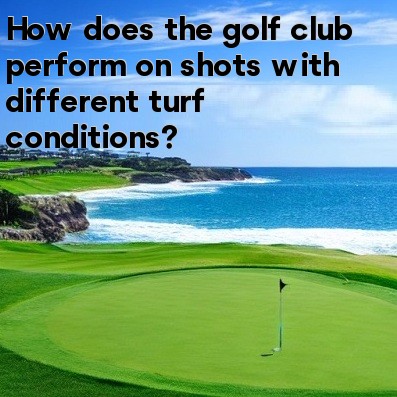
In golf, How does the golf club perform on shots with different turf conditions?
Golf is a game that requires precision, skill, and an understanding of the different aspects that can affect a shot. One crucial aspect is the turf condition, which can significantly impact how the golf club performs and the outcome of the shot.
1. Tee shots:
- On tee shots, the golf club interacts with the turf differently compared to other shots. On a well-maintained tee box, the club will encounter a clean and level surface, allowing for optimal impact and distance. The turf condition here is typically more predictable and provides a stable base for the golfer's swing.
2. Fairway shots:
- When hitting shots from the fairway, the turf condition becomes vital. A well-manicured fairway offers closely mowed grass that allows the club to make clean contact with the ball. This results in improved control and accuracy, enabling the golfer to shape their shot and control the distance more effectively.
- However, if the fairway condition is wet or has longer grass, it can affect the club's performance. Wet conditions may cause the ball to sit down or even pick up mud, which can decrease spin and distance. Longer grass can impede the club's contact with the ball, leading to a missed shot or inconsistency in distance and accuracy.
3. Rough shots:
- Shots from the rough pose a unique challenge for golfers. The rough, with its longer and thicker grass, can alter the club's performance significantly. Hitting from the rough requires more power to get through the dense grass and achieve the desired distance. The club may also twist or turn in the thicker grass, potentially affecting the shot's accuracy.
- Moreover, the ball's lie in the rough is crucial. If the ball sits down or is nestled deep within the grass, it becomes difficult to make solid contact. This can lead to a decrease in distance and accuracy, requiring the golfer to make necessary adjustments in their club selection and swing technique.
4. Bunker shots:
- When a golf ball ends up in a bunker, the sand becomes a significant factor in club performance. The golfer must consider how the club interacts with the sand and how it affects the shot's trajectory and distance.
- In bunkers with soft, fluffy sand, the club's leading edge can dig into the sand easily. This results in the ball coming out with less spin and a higher trajectory. Conversely, in bunkers with firmer, packed sand, the club will glide through the sand, generating more spin and a lower trajectory.
5. Putting greens:
- On the putting greens, golfers face smooth and finely manicured surfaces. The turf condition has a significant influence on the rolling of the ball and, subsequently, the golfer's putting stroke.
- A well-maintained and fast green allows the ball to roll smoothly and quickly, requiring a delicate touch and precision in the golfer's stroke. However, slower or less maintained greens may cause the ball to bobble or stray off course, challenging the golfer's ability to read the green and adjust their putting technique accordingly.
In conclusion, the golf club's performance varies depending on the turf condition. From tee shots to putting greens, different types of turf can impact the outcome of a shot. It is crucial for golfers to adapt and make necessary adjustments in their club selection, swing technique, and overall approach to the game.





